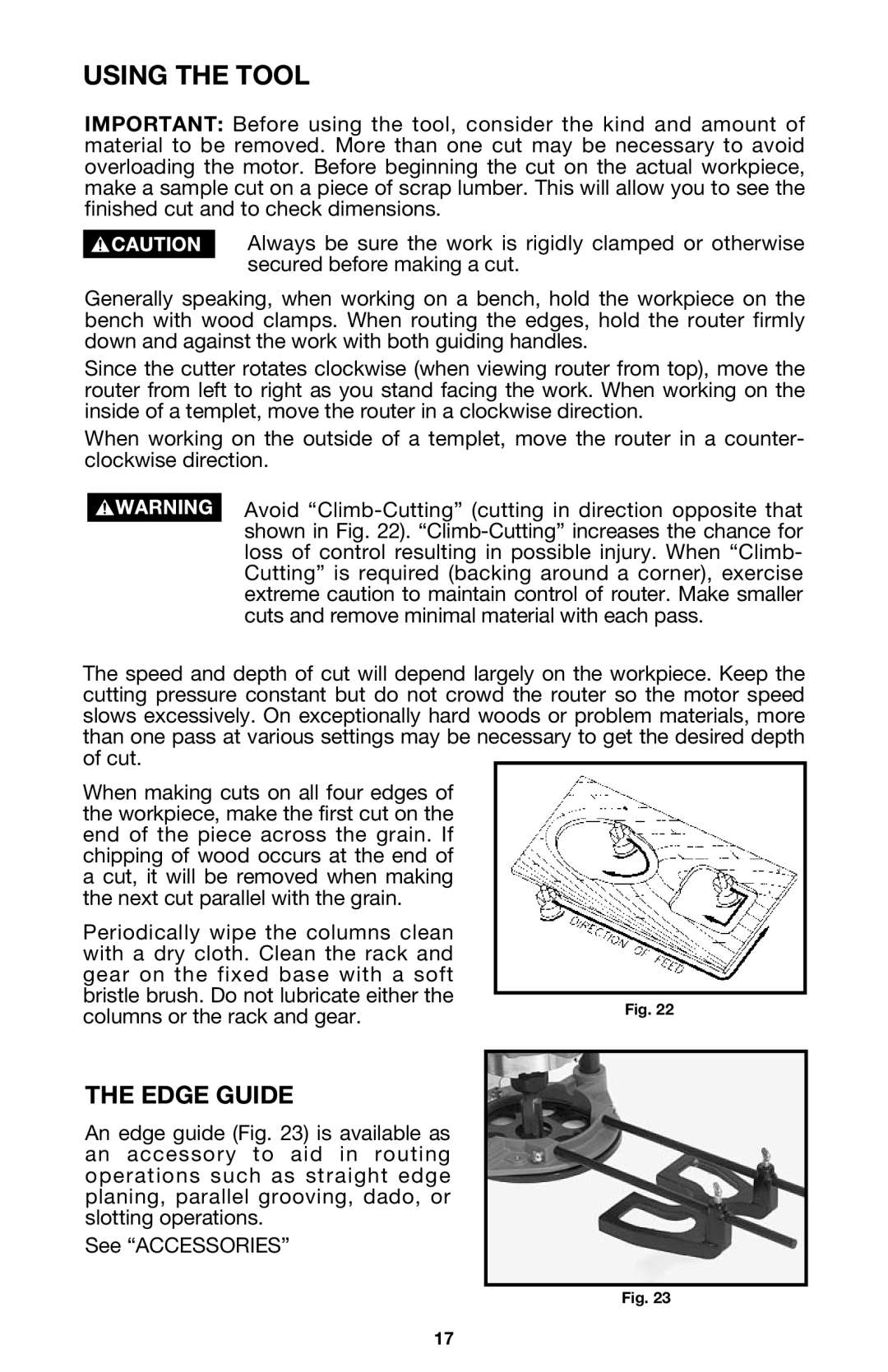
USING THE TOOL
IMPORTANT: Before using the tool, consider the kind and amount of material to be removed. More than one cut may be necessary to avoid overloading the motor. Before beginning the cut on the actual workpiece, make a sample cut on a piece of scrap lumber. This will allow you to see the finished cut and to check dimensions.
Always be sure the work is rigidly clamped or otherwise secured before making a cut.
Generally speaking, when working on a bench, hold the workpiece on the bench with wood clamps. When routing the edges, hold the router firmly down and against the work with both guiding handles.
Since the cutter rotates clockwise (when viewing router from top), move the router from left to right as you stand facing the work. When working on the inside of a templet, move the router in a clockwise direction.
When working on the outside of a templet, move the router in a counter- clockwise direction.
Avoid
The speed and depth of cut will depend largely on the workpiece. Keep the cutting pressure constant but do not crowd the router so the motor speed slows excessively. On exceptionally hard woods or problem materials, more than one pass at various settings may be necessary to get the desired depth of cut.
When making cuts on all four edges of the workpiece, make the first cut on the end of the piece across the grain. If chipping of wood occurs at the end of a cut, it will be removed when making the next cut parallel with the grain.
Periodically wipe the columns clean with a dry cloth. Clean the rack and gear on the fixed base with a soft bristle brush. Do not lubricate either the
columns or the rack and gear. | Fig. 22 |
|
THE EDGE GUIDE
An edge guide (Fig. 23) is available as an accessory to aid in routing operations such as straight edge planing, parallel grooving, dado, or slotting operations.
See “ACCESSORIES”
Fig. 23
17
